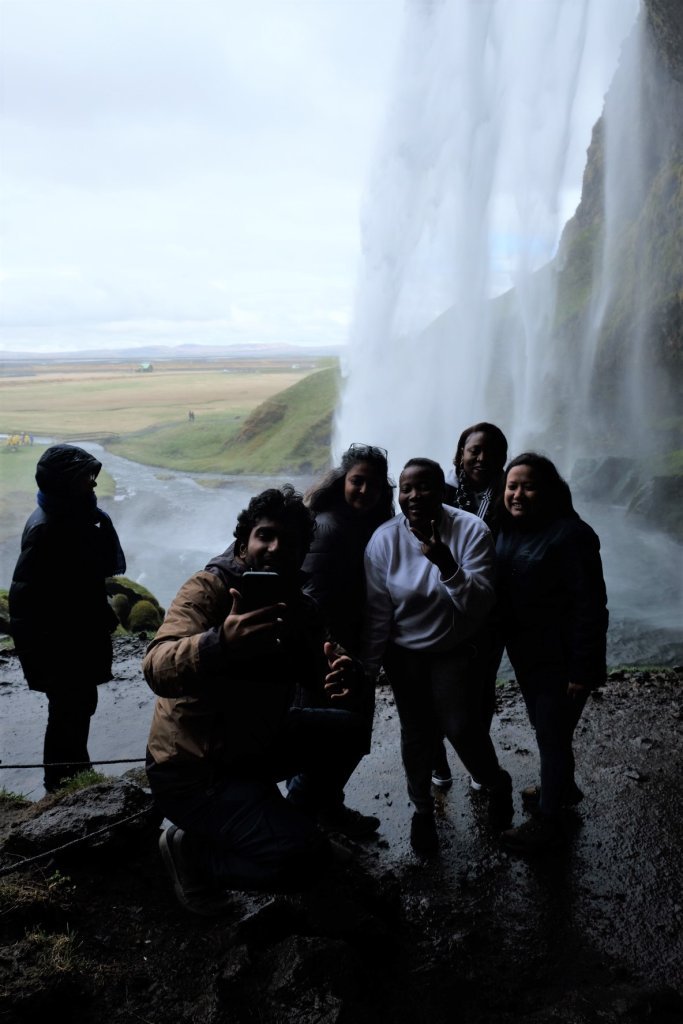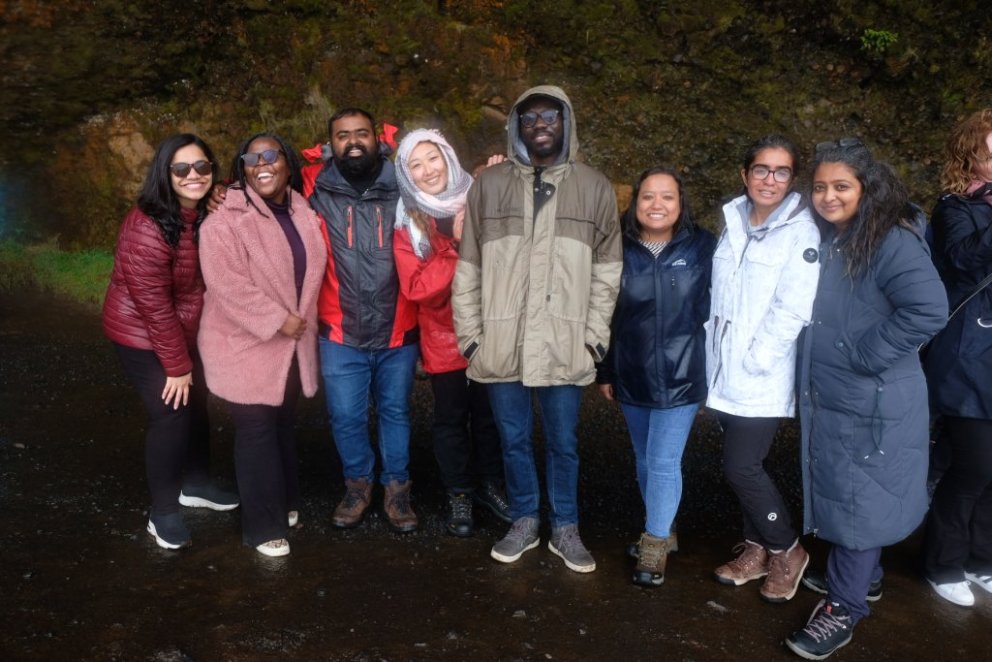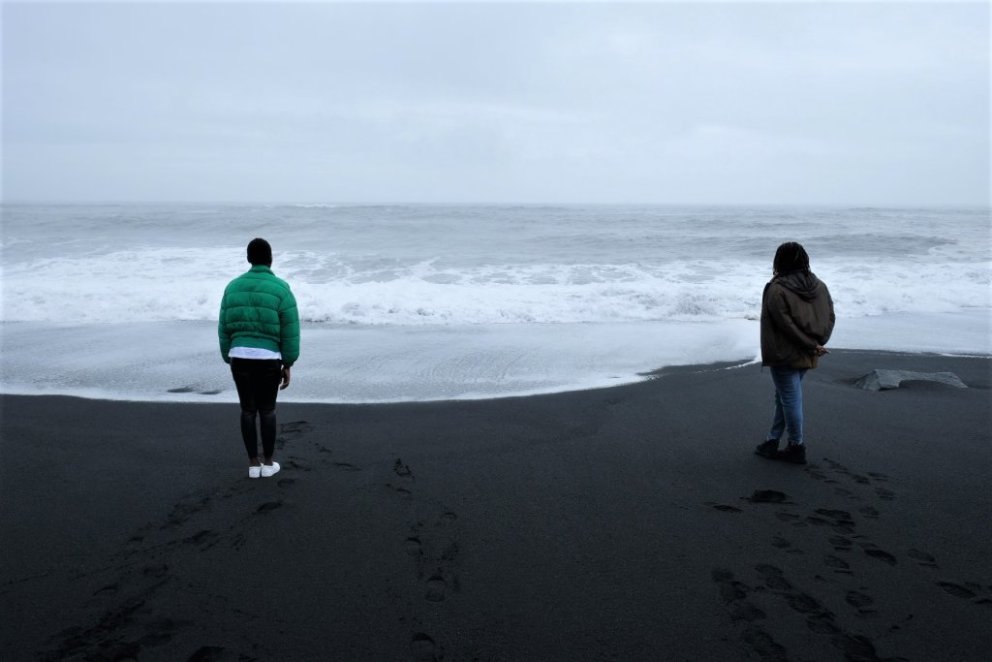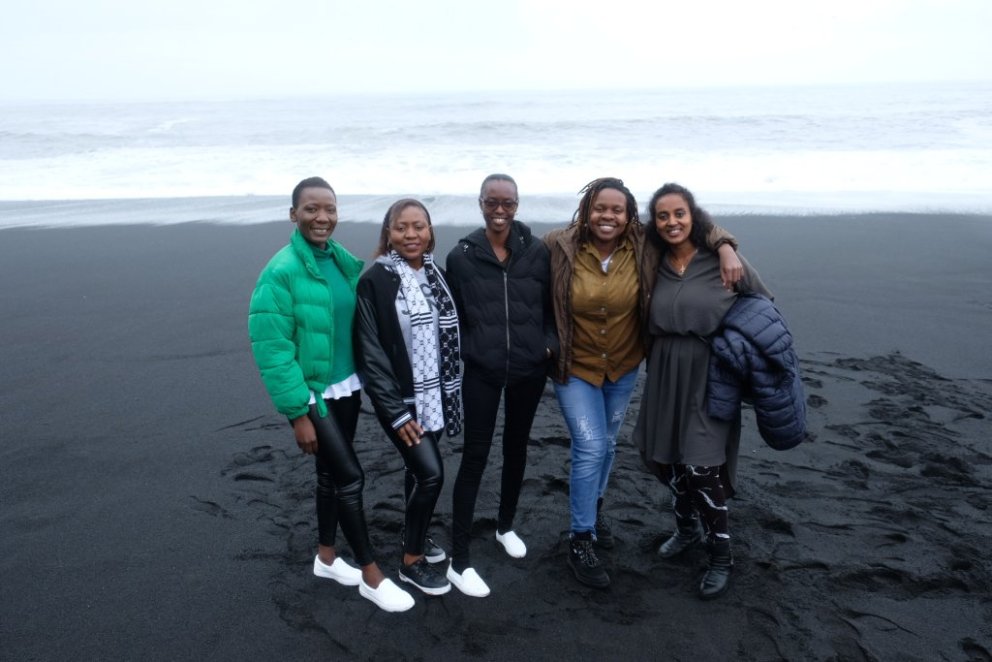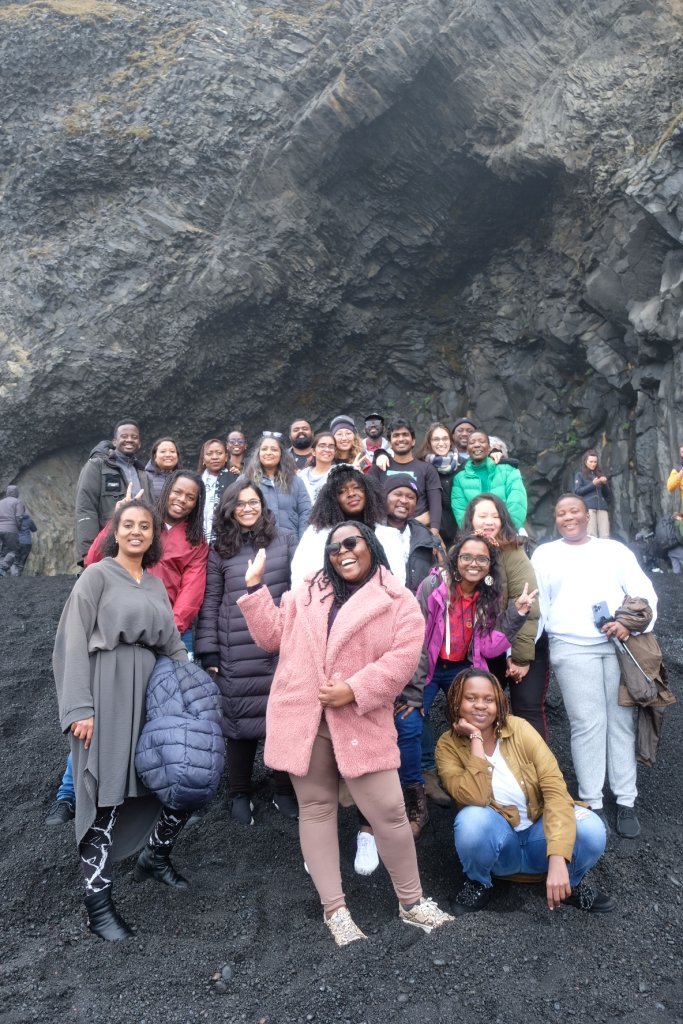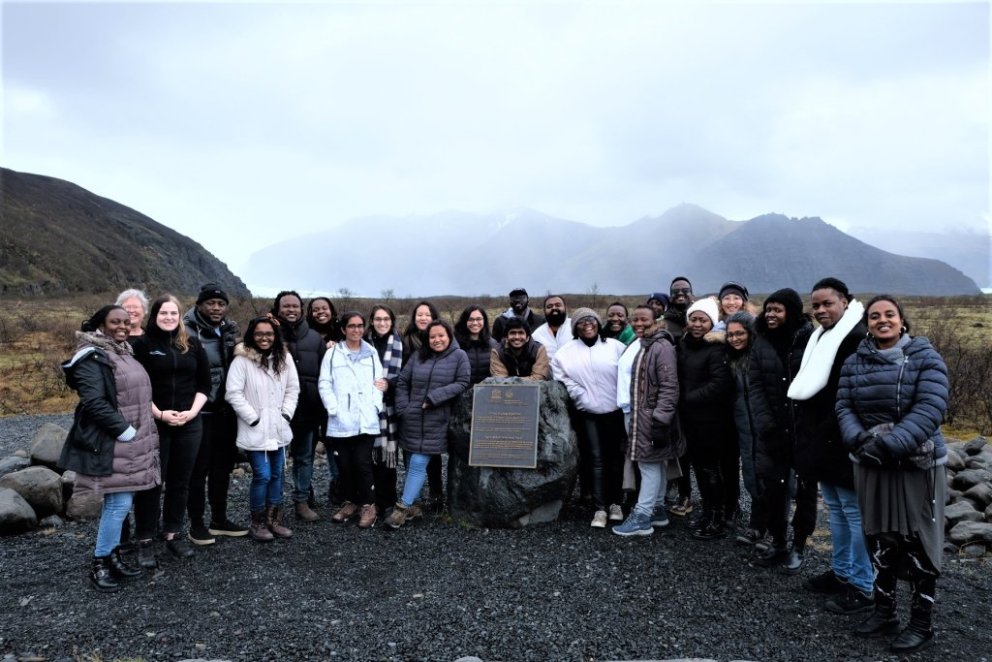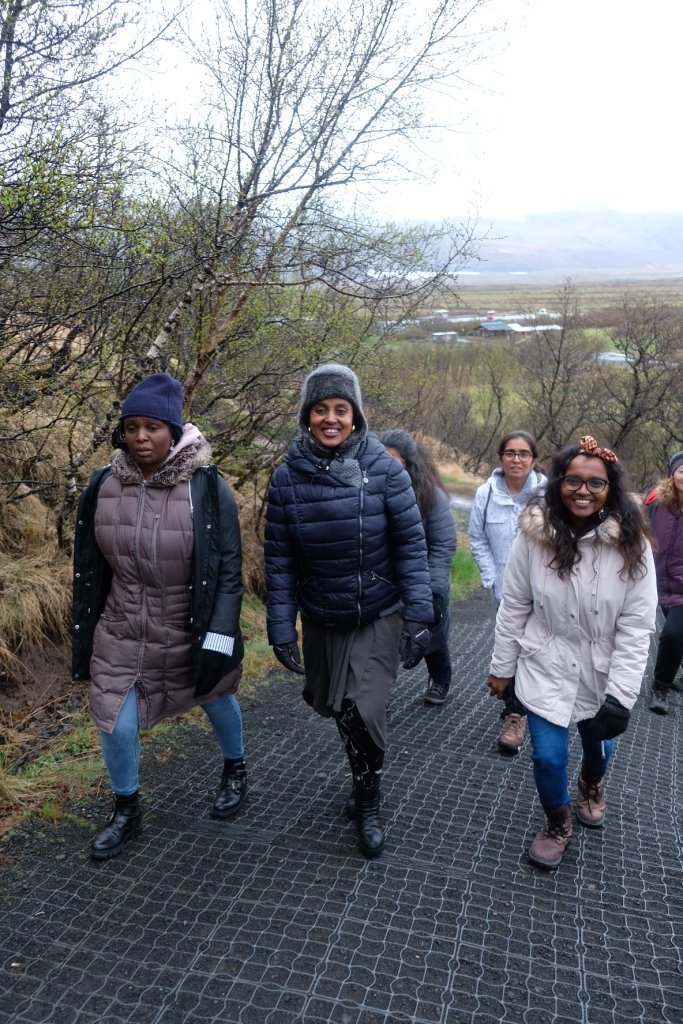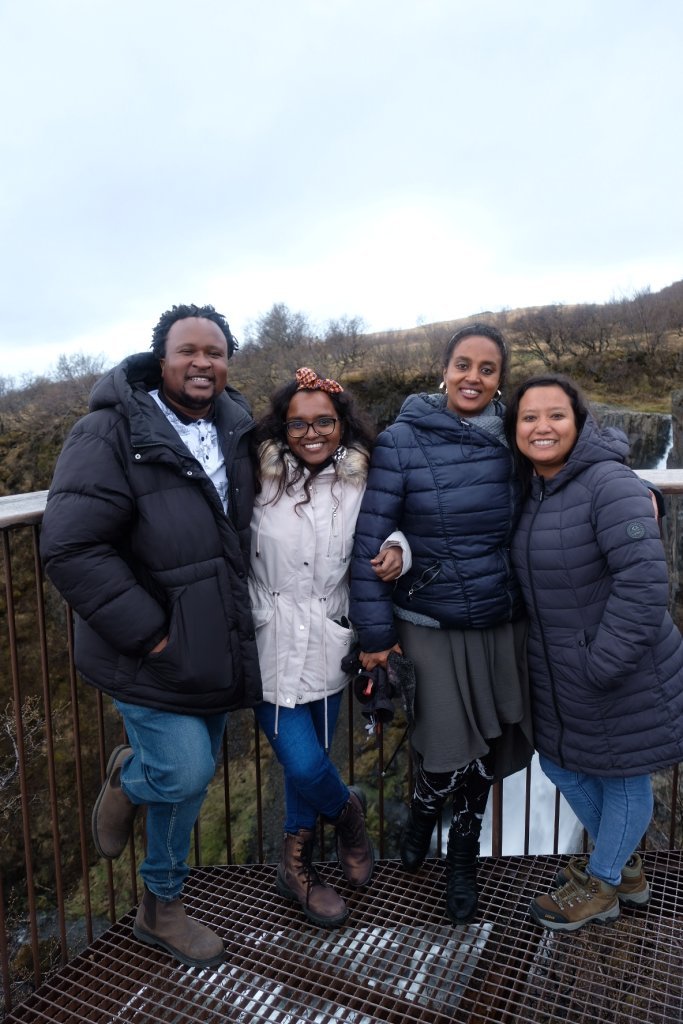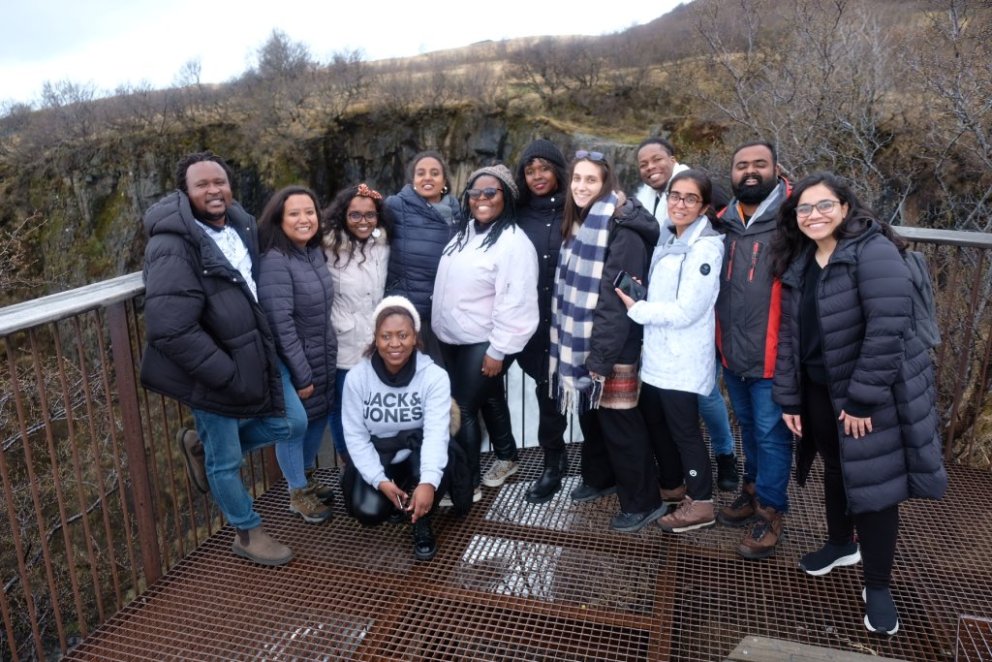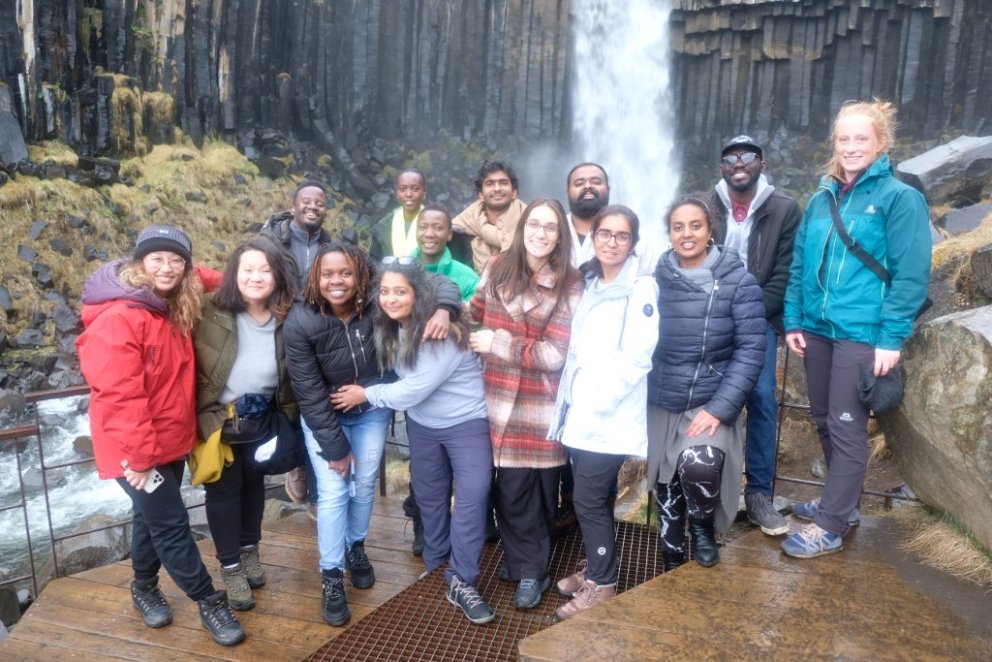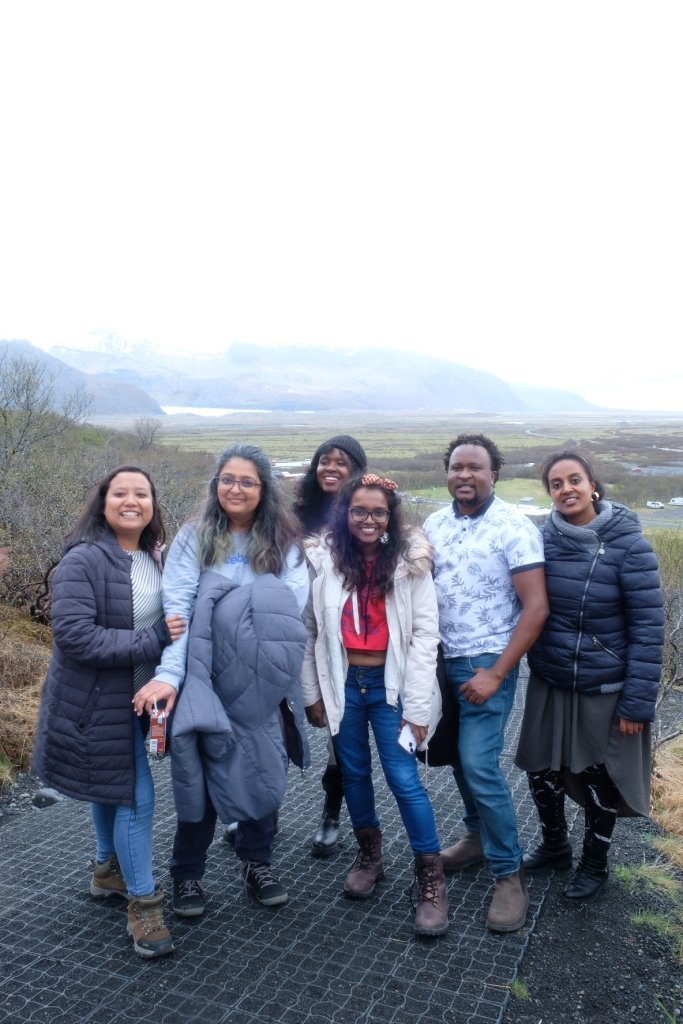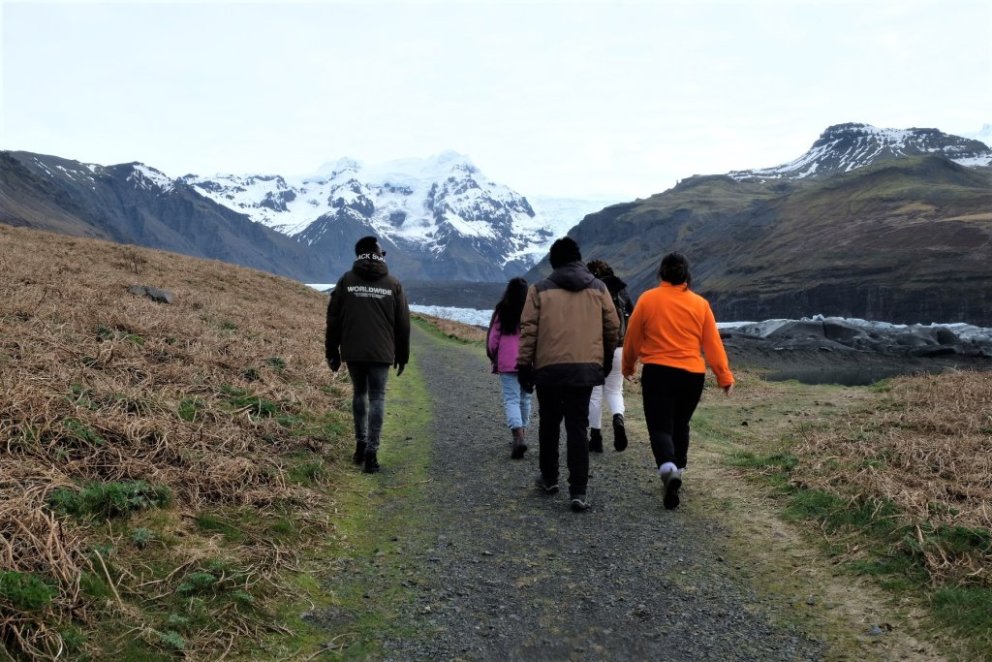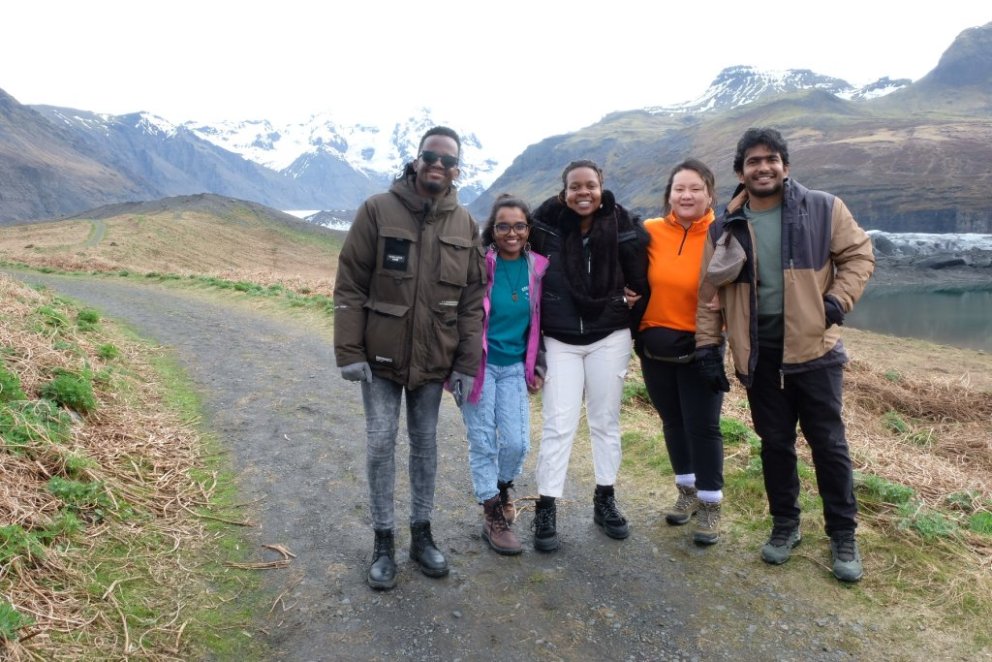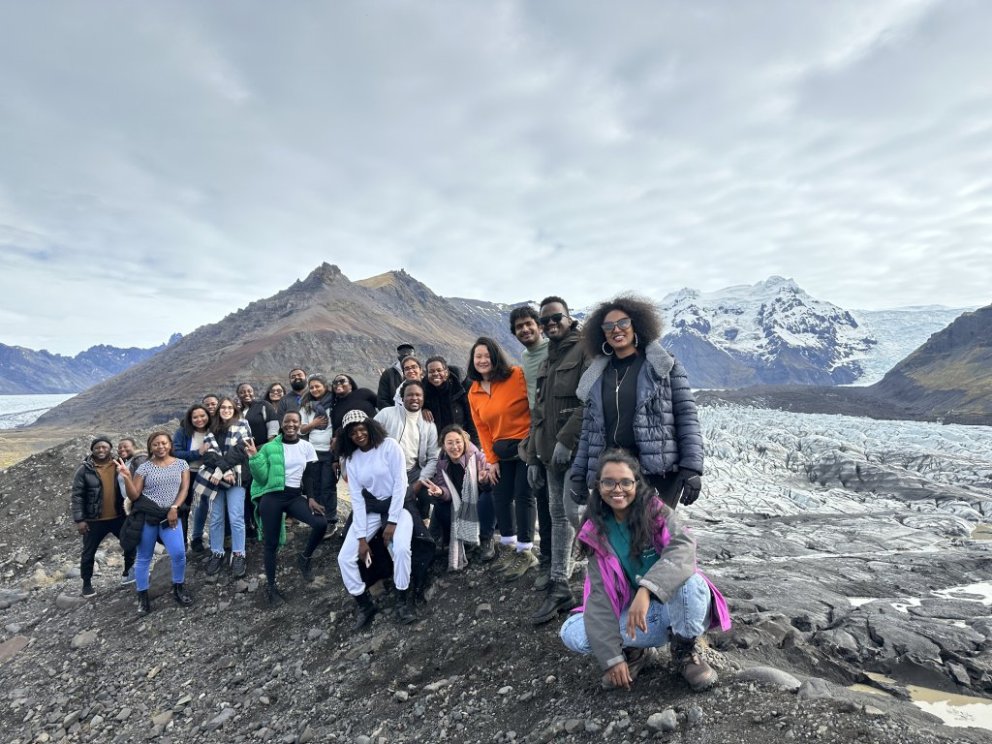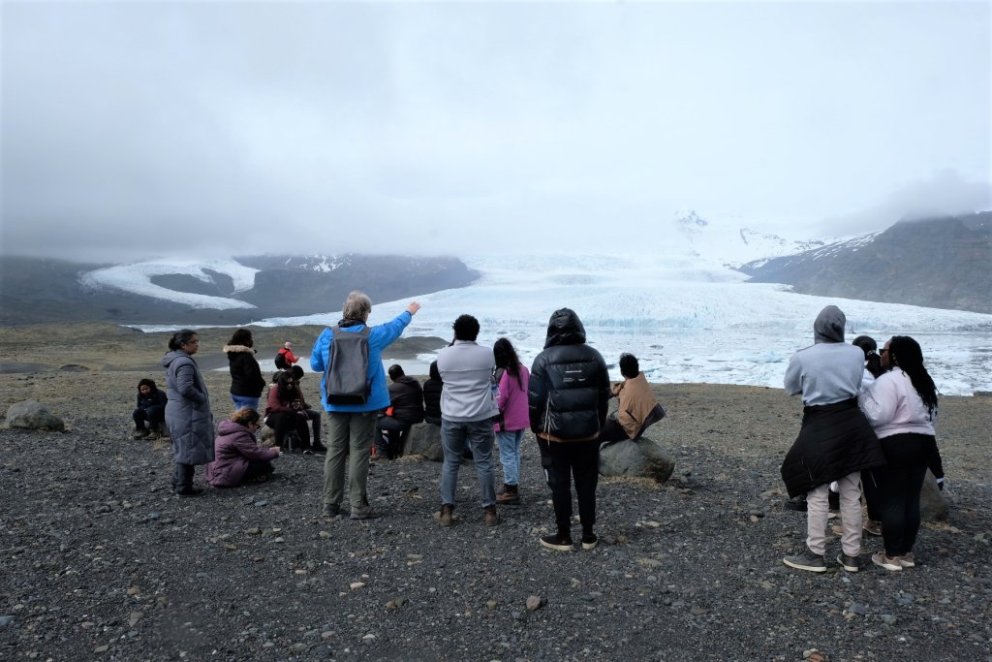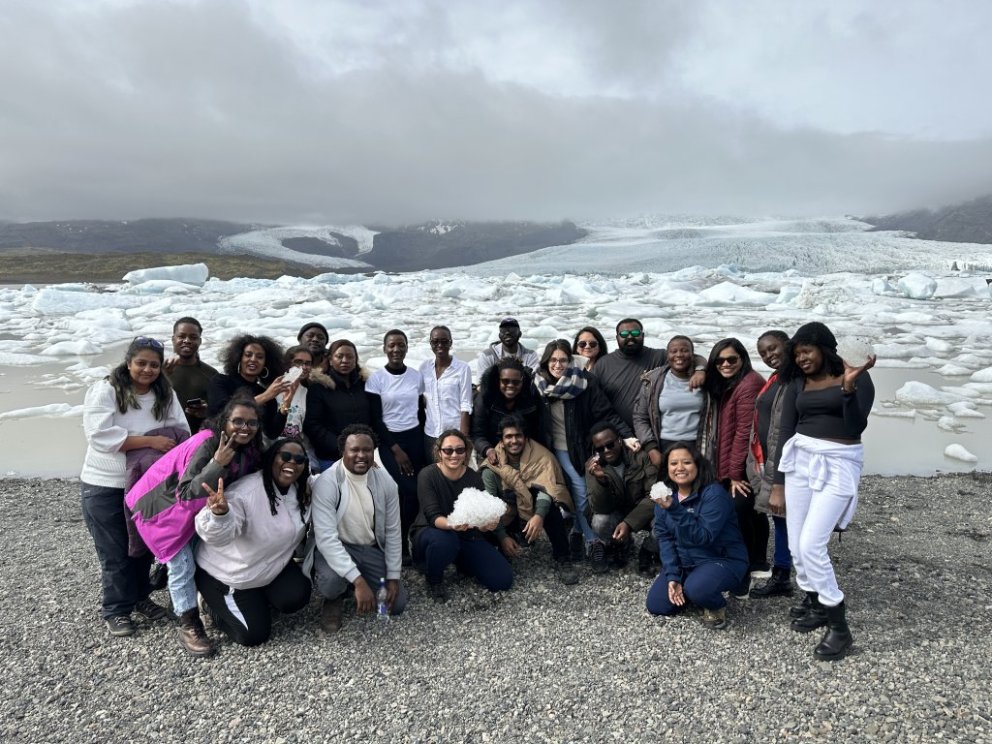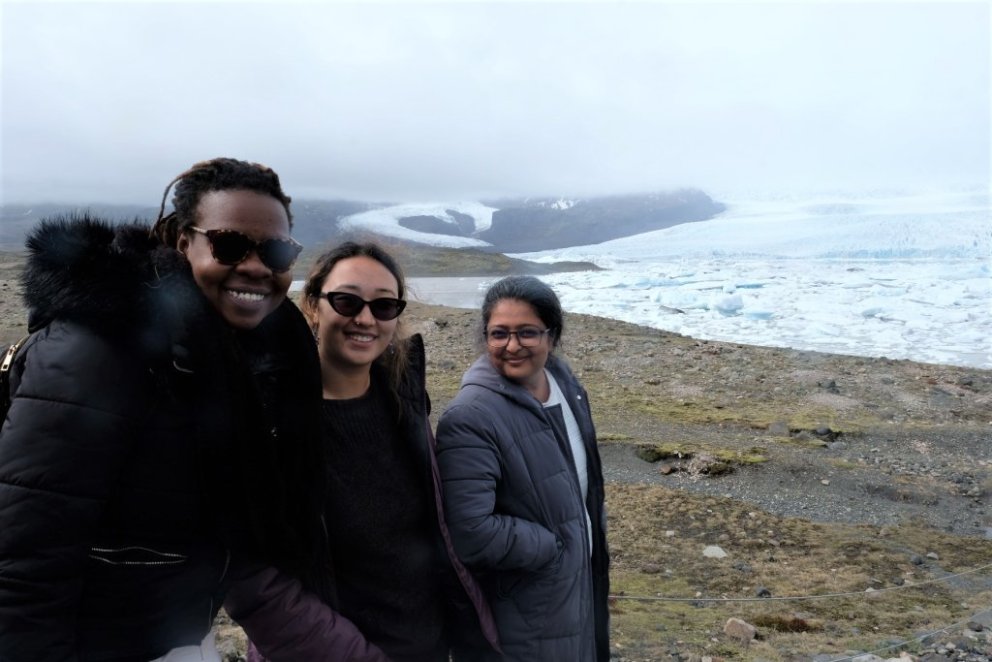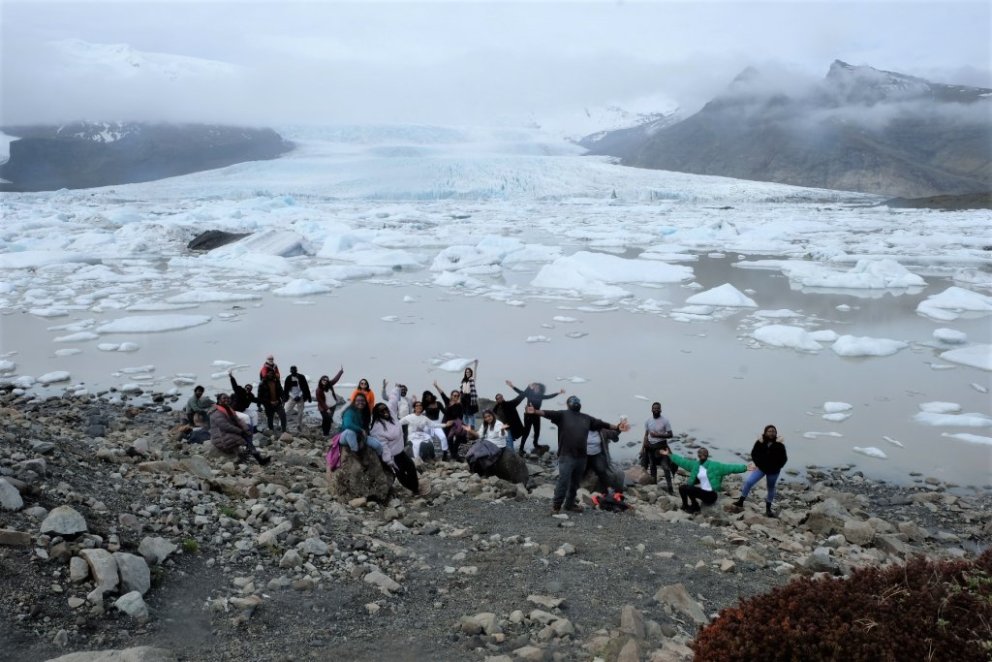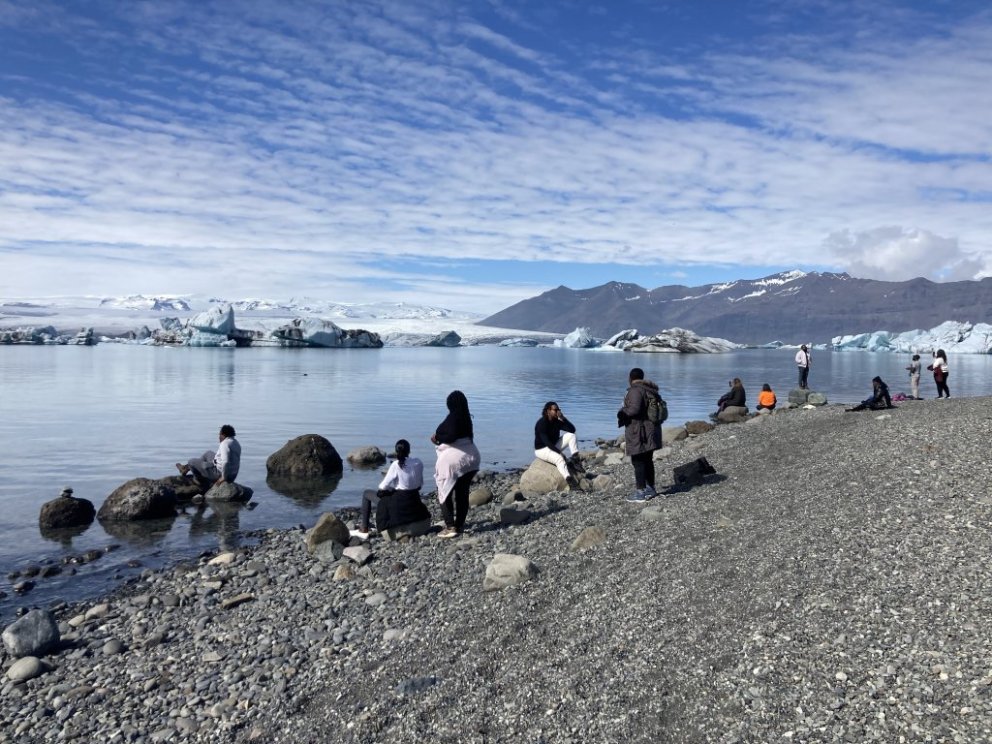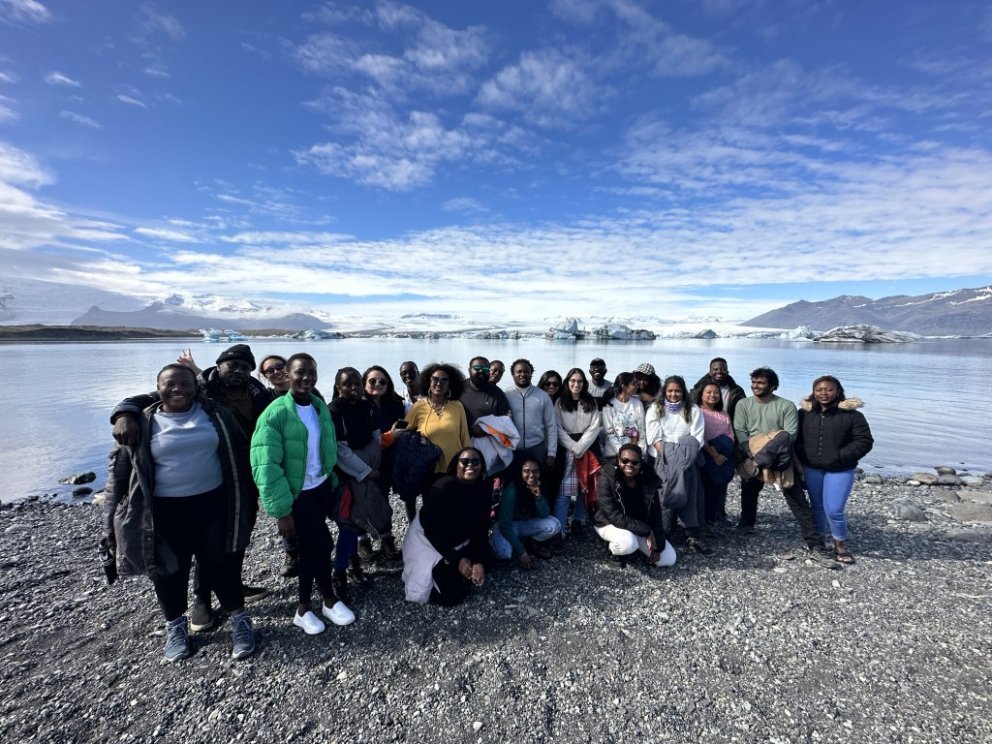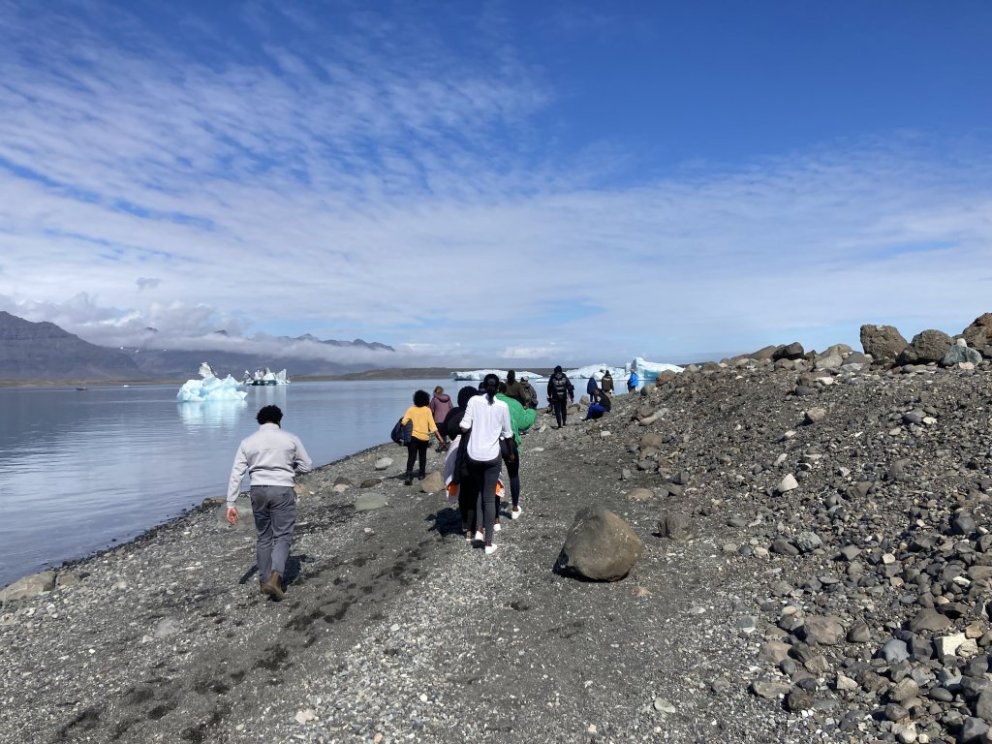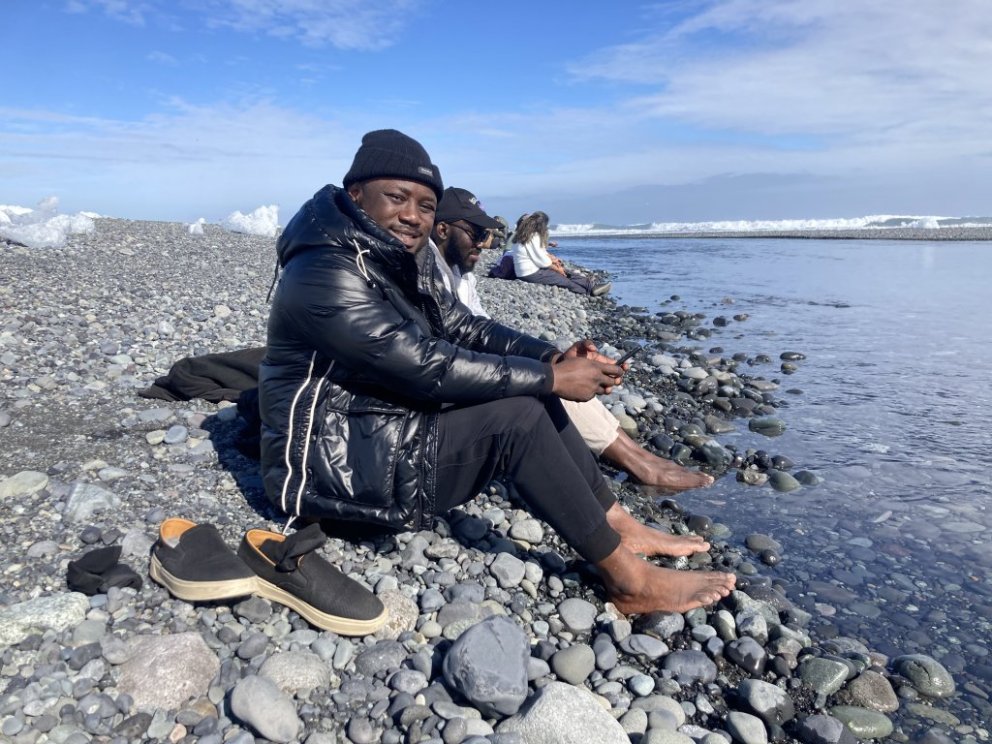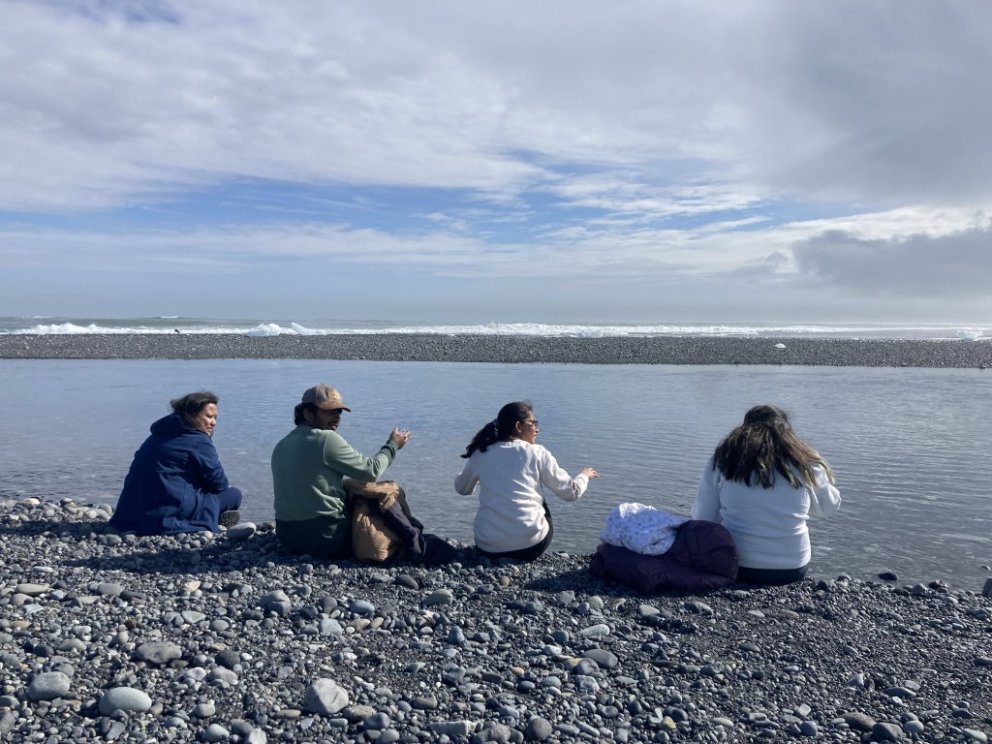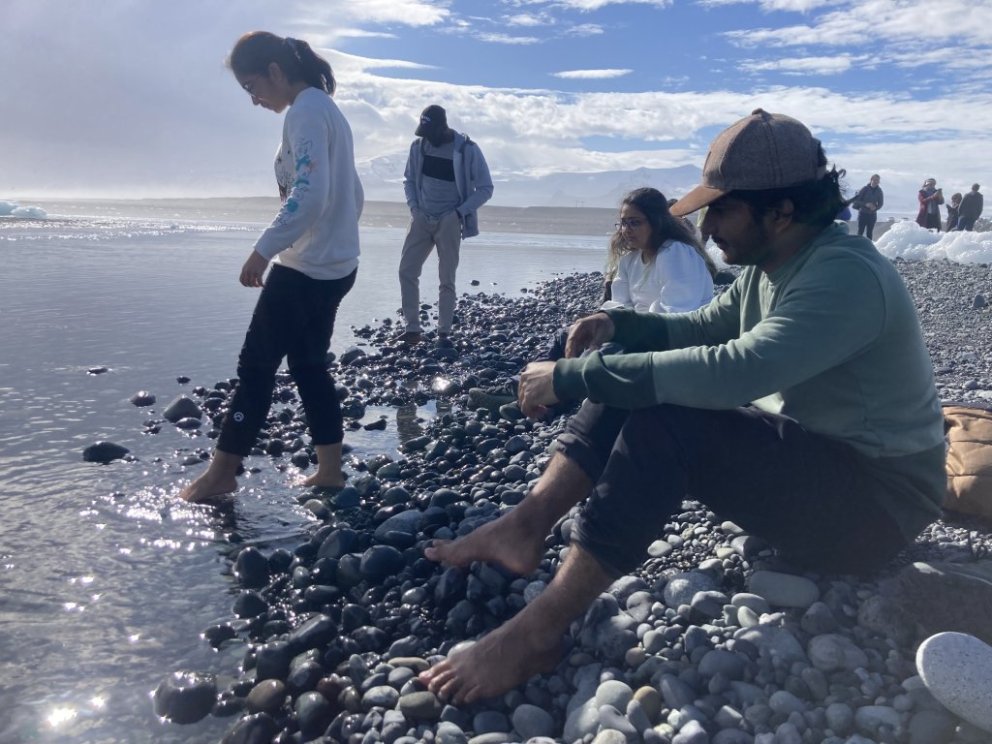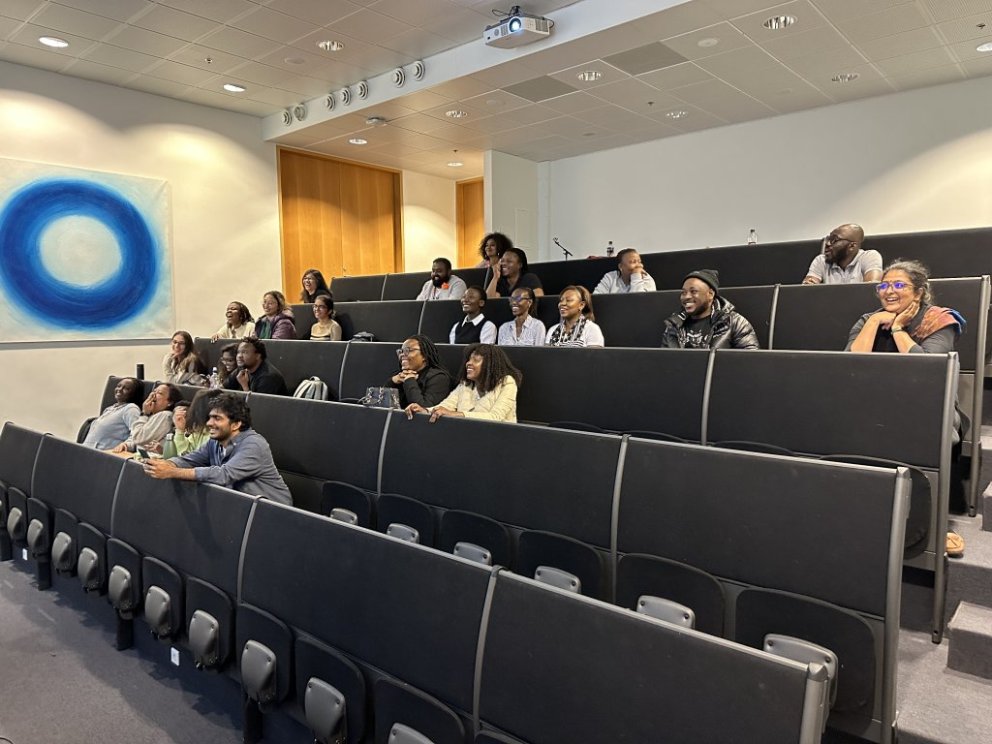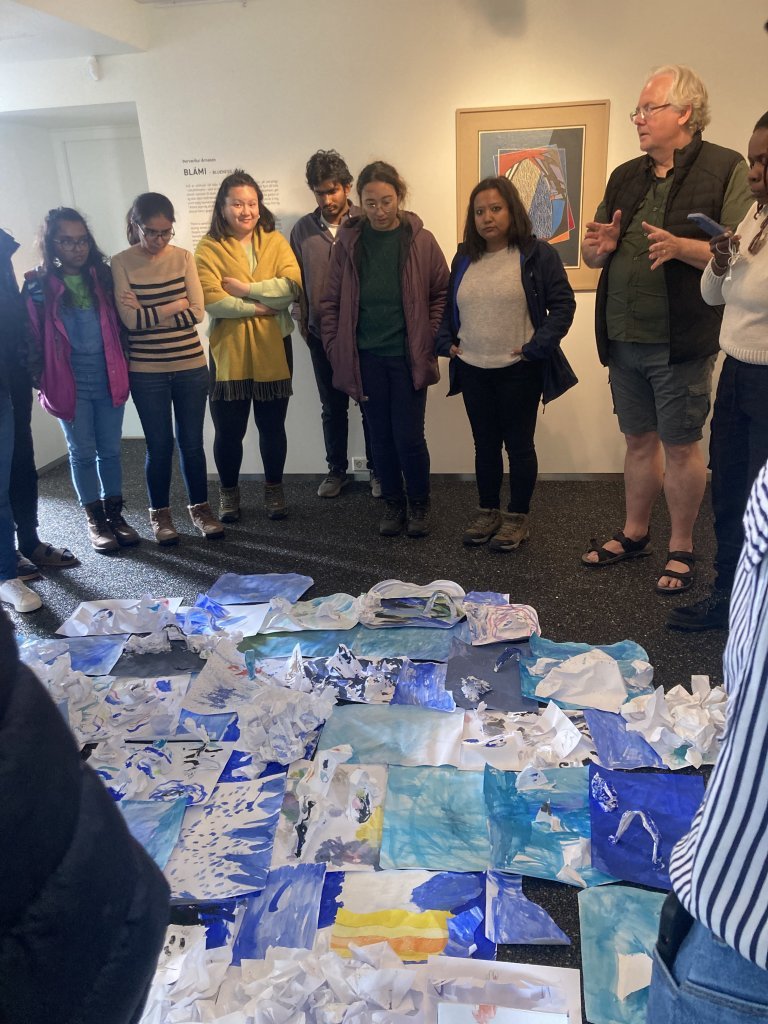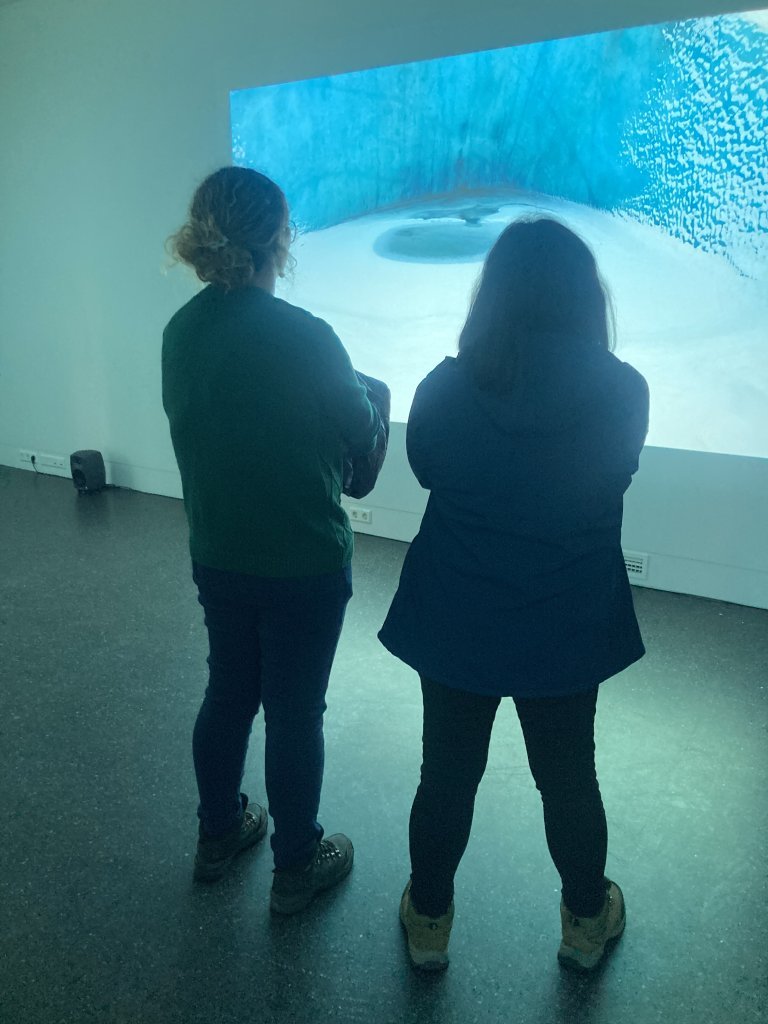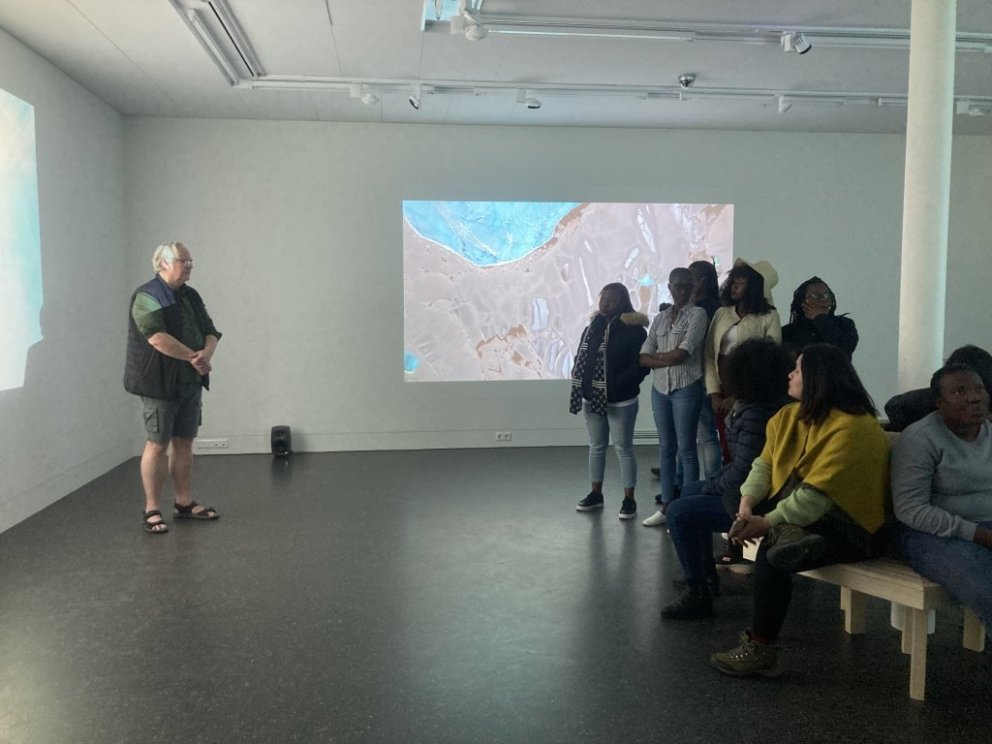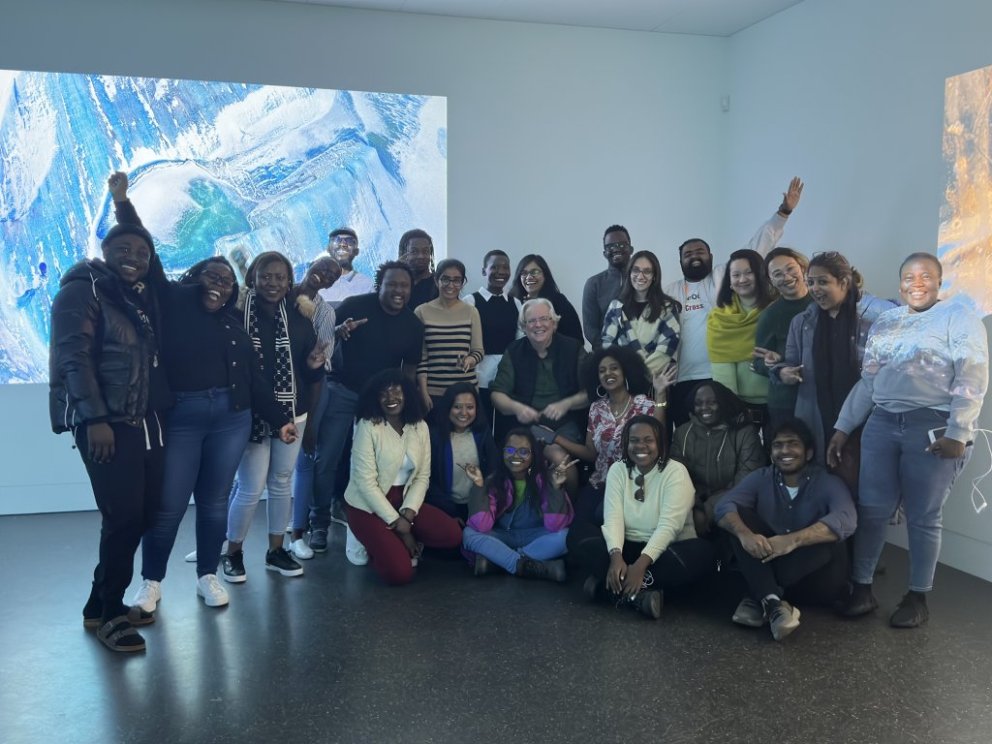GEST Fellows' Annual Field Visit
The 2023 GEST cohort travelled around the south of Iceland in mid-May. The four-day field visit is annual and this year it was a combination of a celebration to mark the fellows' completion of all written assignments, and a study field visit related to the module on Gender, Environment and Climate Change, which was the last module in the academic programme.
The first day was spent in the area from Reykjavík to Skaftafell, stopping at popular tourist attractions such as the waterfalls Seljalandsfoss, Gljúfrabúi, and Skógafoss, as well as the black sand beach Reynisfjara. Despite the heavy clouds and rain, the unique Icelandic landscape was enjoyed by the group. In Skaftafell, the fellows were welcomed by the Park Manager of the southern part of Vatnajökull National Park, Hrafnhildur Ævarsdóttir, and her colleague at the Skaftafell Visitors Centre, Sigrún Sigurgeirsdóttir. They shared the history of Skaftafell and Vatnajökull National Park with the group and introduced the governance system of the Park. In her talk, Hrafnhildur raised the interesting fact that all five park managers of the Vatnajökull National Park are female. In addition, four out of the five assistant park managers are also women. It is in fact an uncommon ratio in manager positions in official government structures in Iceland. The first day was concluded with a 1,5-hour long hike to Svartifoss waterfall, which is surrounded by unique basalt columns before heading to the hotel in the area for a good night sleep.
The second day started with a short hike to the magnificent Svínafellsjökull, a glacier outlet reaching out from Öræfajökul, which is a strato volcano covered by an ice cap. Its caldera includes few of the highest peaks in Iceland, such as Hvannadalshnjúkur (2110 m). The hike took the fellows through old terminal moraines of the glacier, ridges of gravel that the glacier has bulldozed down the valley through the years. The Svínafellsjökull glacier has, as all other glaciers in Iceland, lost much of its volume in recent years. The second stop of the day was at Fjallsárlón, glacier lagoon, where the group met Þorvarður Árnason, a professor at the Hornafjörður Research Centre. Þorvarður introduced the area to the group and walked with them around the lagoon, before heading to the better-known glacier lagoon Jökulsárlón at Breiðamerkursandur. There, the fellows also visited Fellsfjara, also known as the Diamond Beach, due to the small icebergs scattered around the beach. After having enjoyed the sights, and dipped some toes in the sea while being watched by the curious seals, the fellows continued their journey to Hali Farm. At the old barn at Hali, Þorvarður introduced his work on the glaciers to the fellows and shared with them a documentary that he and his colleague, Gunnlaugur Þór Pálsson, have been developing. The group had the opportunity to barbecue at the farm, and together prepared dinner, before heading to the next hotel, close to Höfn.
On the third day the fellows attended presentations at Nýheimar, the knowledge center in the village Höfn. The fellows attended presentations by Þorvarður, Kieran Baxter, Soffía A. Birgisdóttir and Ole Sandberg who dedicated their talks to the glaciers and the impact of climate change, including topics such as glacier visual monitoring, poetry, and global climate justice. The organised schedule was concluded by visiting Þorvarður’s exhibition Blámi (e. Blueness) at the Museum of Svavar, next door to Nýheimar. The rest of the afternoon was spent at Höfn as the fellows went for a stroll around town or a dip in the local swimming pool.
On the last morning, the fellows were awoken by heavy rain which was accompanied by low visibility, making it easier to leave the beauty of the glaciers of Vatnajökull. Despite the low visibility, the fellows had a glimpse at the Icelandic reindeers, as they headed for the six-hour drive back to Reykjavík.
South Iceland Field Visit GEST 2023
